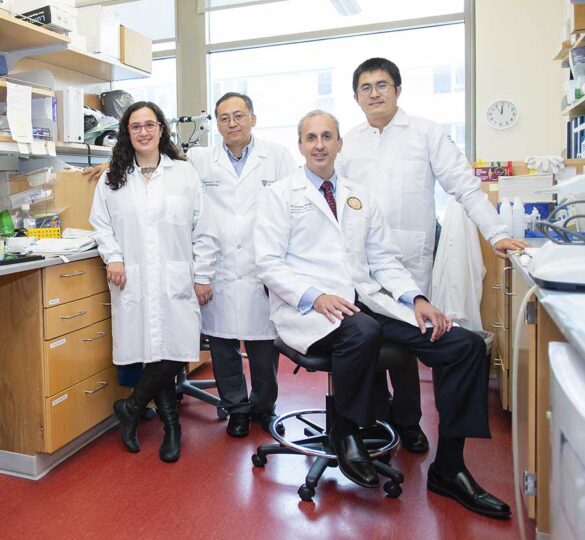2021 Research Progress Report: Catalyst for a Cure Vision Restoration Initiative
Since 2019, the Catalyst for a Cure scientists have been working together in search of innovative ways to replace, repair, and protect neuronal elements of the eye-to-brain connection that can be damaged by glaucoma.

December 2021 Research Update
Collaborating across laboratories, the work of the Catalyst for a Cure Vision Restoration Initiative scientists focuses on ways to restore retinal ganglion cells (RGCs).
These specialized neurons, with long, fiber-like axons, form the optic nerve, which connects the retina to the brain. In patients with glaucoma, RGCs die as axons degenerate, leading to a loss of vision. Because RGCs do not regenerate naturally, restoring vision lost to glaucoma has been a tremendous challenge.
In the second half of 2021, the CFC team made dramatic progress on two priorities: developing therapies to transplant new RGCs and exploring ways to preserve and enhance the eye’s neurological connections.
Earlier in the year, investigators found that a tissue called the inner limiting membrane (ILM) can keep new cells injected into the eye’s vitreous from migrating into the retina, where they must integrate with other retinal cells. To overcome this challenge, investigators developed an innovative surgical technique to make the retina more permeable to transplanted cells. They also looked at how inhibiting a particular enzyme (GCK-IV kinase) boosts the regeneration of axons — a critical step toward restoring the optic nerve.
Investigators also experimented with inhibiting and activating other pathways in search of ways to extend the life of RGCs and enhance transplantation. In one experiment, the team used CRISPR DNA-sequencing technology to identify factors that play a role in the death of RGCs. Another experiment found evidence that manipulating a protein called SARM1 offers some protection of both RGCs and axons. Future experiments will test whether cells preserved this way are able to re-form working synapses.
As 2021 draws to a close, the team continues to refine its approaches to RGC transplantation using various glaucoma models that involve both retina and optic nerve and test treatments they have already identified to improve the survival of cells. They are moving ever closer to therapeutic approaches for the human eye that, ultimately, can be tested in clinical trials.
The Catalyst for a Cure Vision Restoration Initiative’s successes to date offer compelling evidence that the CFC research model — engaging a diversely talented team in intensive, glaucoma-focused studies — is yielding the kind of collaboration that can lead to important breakthroughs. With team members just hitting their stride, the Glaucoma Research Foundation Board of Directors voted in earlier this year to extend the funding for the CFC Vision Restoration Initiative for another three years.
To initiate the $3 million funding needed for this second phase, Steven and Michele Kirsch pledged $1.5 million as a challenge grant and matched all donations until December 31, 2021. The Catalyst for a Cure consortium’s next annual review with their scientific advisors, in February 2022, provided another opportunity to plan for the future and build on successes to date, moving ever closer toward the goal of protecting and restoring vision lost to glaucoma.
Posted December 7, 2021